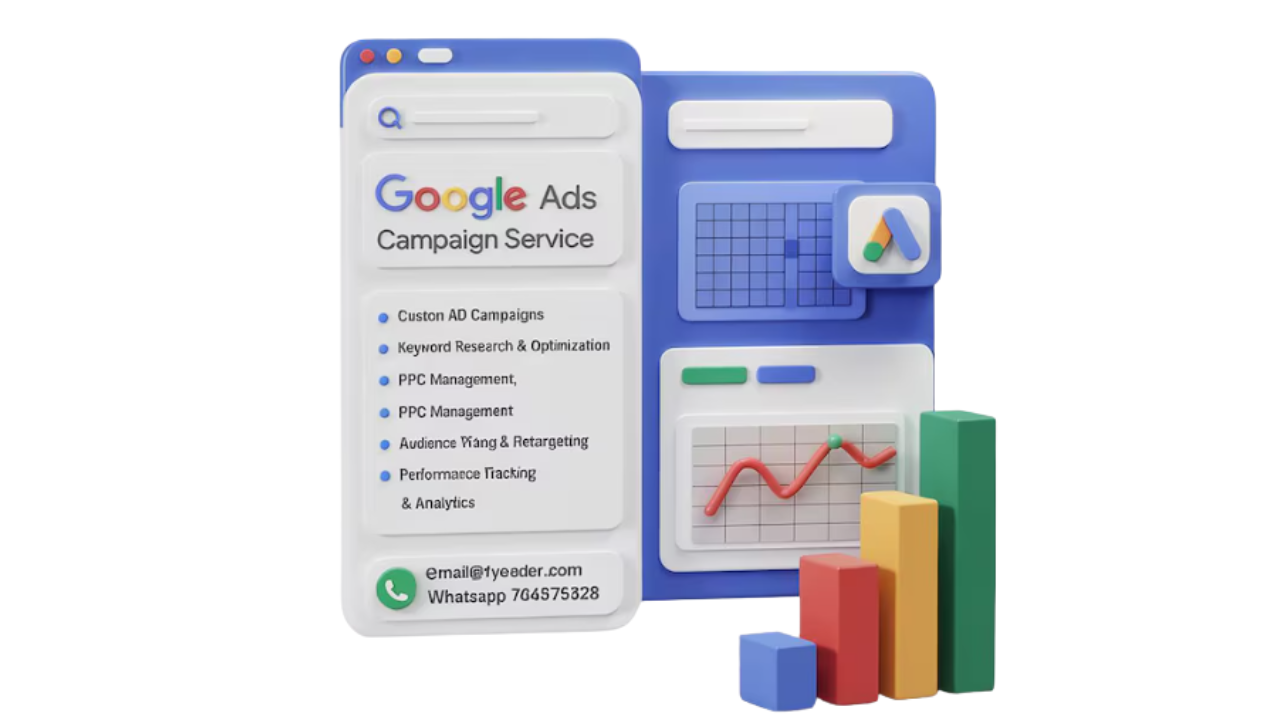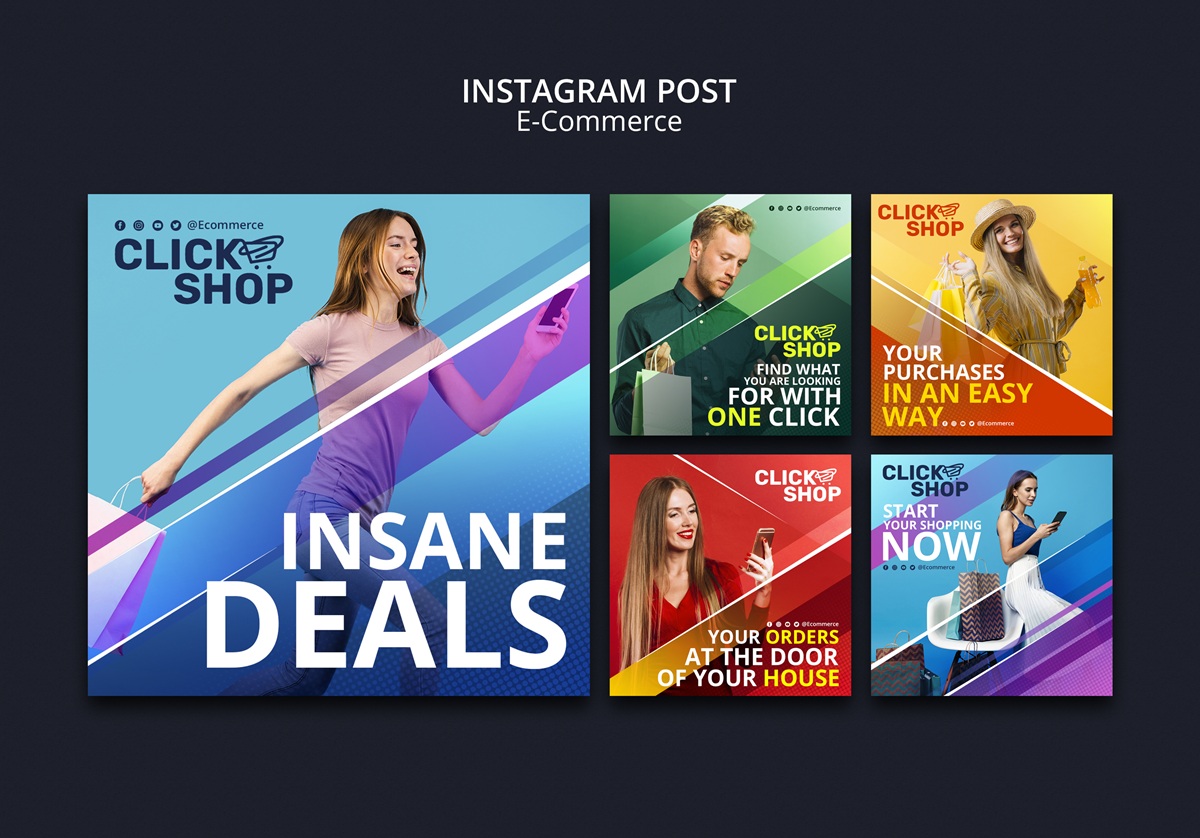Let's be real for a second. You can have the most beautiful Shopify dropshipping store, the best products, and killer customer service—but if nobody knows you exist, you're just burning money.
I learned this the hard way when I launched my first dropshipping store. Spent weeks perfecting product descriptions and store design, then sat back waiting for sales to roll in. Spoiler alert: they didn't.
The game-changer? Learning how to advertise dropshipping products effectively. After testing every major advertising platform and burning through more ad budget than I care to admit, I've cracked the code on what actually works.
This guide breaks down everything you need to know about dropshipping advertising—from choosing the right platforms to creating ads that convert like crazy. No theoretical fluff, just battle-tested strategies that drive real traffic to your store.
Why Most Dropshipping Ads Fail (And How to Fix It)

Before we dive into specific platforms, let's address the elephant in the room: most dropshipping ads suck.
I've audited hundreds of dropshipping marketing campaigns, and the same mistakes keep appearing:
Generic targeting: Trying to sell to "everyone aged 18-65 interested in shopping" Weak creative: Stock photos that scream "dropshipped from China"
No testing system: Running one ad and hoping for the best Ignoring the customer journey: Expecting cold traffic to convert immediately
The dropshipping stores that actually make money understand this: advertising isn't about showing your product to as many people as possible. It's about showing the right product to the right person at the right time with the right message.
That shift in mindset changes everything.
While this guide focuses specifically on advertising and traffic generation, successful dropshipping advertising campaigns rely on solid foundational business elements including supplier relationships, store optimization, product selection, and fulfillment processes. Running effective ads to a poorly structured store wastes advertising budget and damages long-term profitability regardless of how well you master platform-specific tactics.
For entrepreneurs who need to establish or strengthen their dropshipping fundamentals before scaling advertising efforts, review our comprehensive ultimate guide to dropshipping covering everything from supplier selection to store optimization that makes your advertising investments more effective.
Google Ads for Dropshipping: The Traffic Goldmine

When people ask me about the best advertising platform for your dropshipping business, I always start with Google ads. Here's why:
High intent traffic: People searching on Google are actively looking to buy something Immediate results: Your ads can start driving traffic within hours Scalable: Once you find winning keywords, you can increase budget and expand
Types of Google Ads That Work for Dropshipping
Google Shopping Ads
These are my favorite ads for dropshipping stores. When someone searches for "wireless earbuds," they see your product image, price, and store name right at the top of search results.
Setting up shopping ads requires:
- Google Merchant Center account
- Product feed with high-quality images
- Competitive pricing (Google shows price comparisons)
- Clear product titles and descriptions
I've seen dropshipping stores get 3-5x better click-through rates with shopping ads compared to text ads. The visual element makes all the difference in attracting potential customers to your ads.
Search Ads
Traditional text ads still work, especially for specific product searches. The key is bidding on buyer-intent keywords:
- "Buy [product name]"
- "[Product] for sale"
- "[Product] reviews"
- "Best [product] 2025"
Avoid generic keywords like "phone accessories"—they're too expensive and convert poorly.
Display Ads
These banner ads appear on websites across Google's network. They're great for retargeting people who visited your store but didn't buy.
Pro tip: Create display ads that show your actual products, not generic lifestyle images. I tested this with a client selling kitchen gadgets, and product-focused display ads outperformed lifestyle ads by 40%.
Using Google Ads for Dropshipping: Budget and Bidding
Start with a daily budget of $30-50 for Google ads. This gives you enough data to optimize without breaking the bank.
For bidding strategies:
- New campaigns: Start with manual CPC bidding to optimize your advertising strategy for better results.
- Proven campaigns: Switch to Target CPA once you have conversion data
- Shopping campaigns are a great way to run ads that target potential customers for your online store.: Use Enhanced CPC for better performance
Most successful dropshipping businesses I work with spend $50-200 per day on Google ads once they find winning products to increase sales.
Facebook Ads for Dropshipping: The Creative Playground

Facebook ads offer something Google can't: the ability to reach people who don't even know they want your product yet.
The platform's targeting options are incredible for dropshipping stores. You can find people based on interests, behaviors, demographics, and even life events.
Best Facebook Ad Formats for Dropshipping
Video Ads for ecommerce can significantly increase sales when tailored to the audience.
Video ads are absolutely crushing it for dropshipping right now. The engagement rates blow static images out of the water.
What makes dropshipping video ads effective:
- Show the product in action within the first 3 seconds
- Include captions (80% of videos are watched with sound off)
- Keep it under 30 seconds for feed placement
- Add urgency with limited-time offers
I recently helped a client create a 15-second video showing their phone grip in action. That single video ad generated $47,000 in sales over two months with a $8,000 ad spend.
Carousel Ads
Perfect for showing multiple product angles or different color options. Each carousel card should highlight a specific benefit or use case.
Collection Ads
These let customers browse your products without leaving Facebook. They're particularly effective for fashion and home decor dropshipping stores.
Stories Ads
Full-screen, immersive ads that appear between user stories. They work well for younger demographics and impulse-buy products.
Facebook Ads vs Google Ads for Dropshipping
Here's how I decide which platform to focus on:
Use Facebook ads when you want to increase traffic to your website and reach potential customers.:
- Your product is impulse-buy oriented
- You have strong visual content
- Your target audience is active on social media
- You want to build brand awareness
Use Google ads when:
- People actively search for your product type
- You have competitive pricing
- You want immediate, high-intent traffic
- Your product solves a specific problem
Most successful dropshipping businesses use both platforms, but start with one to master the fundamentals.
Instagram Ads for Dropshipping: Visual Storytelling That Sells

Instagram ads for dropshipping work incredibly well for products that photograph beautifully and drive traffic to your website. The platform is perfect for lifestyle and aesthetic products.
Types of Instagram Ads That Convert
Feed Ads: Traditional posts that appear in users' feeds with clear "Shop Now" calls-to-action
Stories Ads: Full-screen vertical ads that feel native to the Instagram experience
Reels Ads: Short-form video content that can go viral and reach massive audiences
Shopping Ads: Users can tap on products in your posts to see pricing and purchase directly
Instagram Ads for Dropshipping: Content Strategy
The biggest mistake I see with Instagram advertising is treating it like Facebook. Instagram users expect polished, aesthetic content.
Your Instagram ads should:
- Use high-quality, professional-looking images
- Incorporate user-generated content when possible
- Match the platform's visual style
- Tell a story, not just showcase features
One dropshipping client selling bohemian jewelry saw their cost per acquisition drop by 60% when they switched from product-only shots to lifestyle images showing the jewelry being worn.
TikTok Ads: The New Frontier for Dropshipping
TikTok is exploding for dropshipping advertising, especially for products targeting Gen Z and younger millennials.
The platform rewards authentic, native content over polished ads, making it crucial to market your dropshipping effectively. Your dropshipping video ads should feel like regular TikTok videos, not traditional advertisements, to effectively market your dropshipping business to potential customers.
What Makes TikTok Ads Work for Dropshipping
Authenticity over polish: Raw, genuine content performs better than professional production
Trend incorporation: Using trending sounds and hashtags can massively boost reach
Quick hooks: You have 3 seconds max to grab attention
User-generated content: Encouraging customers to create TikToks with your products
I'm seeing dropshipping stores achieve $2-4 cost per acquisition on TikTok—numbers that were unthinkable on other platforms just two years ago.
Email Marketing: The Often-Ignored Traffic Driver
Most dropshipping store owners obsess over paid ads and completely ignore email marketing. That's a massive mistake.
Email marketing for dropshipping serves two crucial purposes:
- Nurturing: Converting visitors who aren't ready to buy immediately
- Retention: Turning one-time customers into repeat buyers
Email Marketing Strategies for Dropshipping
Abandoned Cart Recovery: Set up automated emails for people who add products but don't complete checkout. This alone can recover 10-15% of lost sales.
Welcome Series: New email subscribers get a series of 3-5 emails introducing your brand and showcasing best-selling products.
Product Recommendations: Based on browsing behavior and purchase history.
Seasonal Campaigns: Holiday promotions, back-to-school sales, summer collections, etc.
The most successful dropshipping businesses I work with generate 20-30% of their revenue from email marketing.
Content Marketing and Influencer Marketing for Dropshipping
Not all traffic to your store needs to come from paid ads. Organic marketing strategies can drive consistent, free traffic over time.
Content Marketing for Dropshipping Stores
SEO-optimized blog content: Create buying guides, product comparisons, and how-to content around your niche
YouTube product reviews: Video content builds trust and showcases products effectively
Social media presence: Regular posting on Instagram, TikTok, and Pinterest builds brand awareness
Influencer Marketing for Your Dropshishing Business
Micro-influencers (1K-100K followers) often deliver better ROI than macro-influencers for dropshipping products.
Look for influencers who:
- Have engaged audiences in your target demographic
- Create authentic content that doesn't feel overly promotional
- Have worked with similar products before
- Charge reasonable rates (typically $100-500 per post for micro-influencers)
I've helped dropshipping clients get $3-6 return on ad spend through strategic influencer partnerships.
The advertising strategies and budget allocations discussed throughout this guide apply differently depending on whether you're selling low-ticket impulse purchases or premium high-ticket products. High-ticket dropshipping demands more sophisticated advertising approaches including longer nurture sequences, educational content, and trust-building campaigns that justify premium price points and typically longer sales cycles.
For entrepreneurs considering or operating in the high-ticket segment, our specialized guide to high-ticket dropshipping covers advertising nuances, customer acquisition strategies, and conversion optimization tactics specific to premium product marketing.
Advertising Campaign Strategy: Planning for Success
Random ads don't build sustainable dropshipping businesses. You need a systematic approach to your advertising campaigns.
The Dropshipping Marketing Strategy Framework
Phase 1: Testing (Weeks 1-2)
- Create 3-5 different ad creatives per product
- Test different audiences and demographics
- Start with small daily budgets ($10-20 per ad set)
- Focus on finding winning combinations
Phase 2: Scaling (Weeks 3-4)
- Increase budgets on winning ad sets
- Create similar audiences based on your best performers
- A/B test different landing pages
- Expand to additional advertising platforms
Phase 3: Optimization (Ongoing)
- Refresh ad creative monthly to combat ad fatigue
- Test new products with proven audiences
- Optimize for lifetime value, not just first purchase
- Build remarketing audiences for cheaper traffic
Budget Allocation for Dropshipping Ads
Here's how I recommend allocating your advertising budget:
Google Ads: 40-50% - High-intent traffic converts well Facebook/Instagram: 30-40% - Great for audience building and creative testing
TikTok: 10-20% of your budget should be allocated to ads that drive traffic to your website. - Emerging platform with low competition Email Marketing: 5-10% - Highest ROI over time
Start with one platform until you're profitable, then expand to others. Before investing heavily in advertising, understanding your product pricing strategy fundamentally shapes your entire campaign approach and profitability expectations. High-ticket dropshipping products with larger margins can sustain higher customer acquisition costs and allow for more aggressive testing, while low-ticket products require volume-focused strategies with tighter budget controls and faster optimization cycles.
For comprehensive guidance on how product pricing tiers influence advertising strategy, budget allocation, and scalability potential, explore our detailed comparison of high-ticket dropshipping versus low-ticket dropshipping to align your advertising investments with your product category's economics.
Advanced Advertising Tactics for Scaling
Once you've mastered the basics, these advanced strategies can 2-3x your results and effectively market your dropshipping products.
Retargeting Ads That Actually Work
Most dropshipping stores set up basic retargeting and call it done. That's leaving money on the table.
Advanced retargeting segments:
- Product page visitors: Show ads for the specific product they viewed
- Cart abandoners: Different messaging than general retargeting
- Past customers: Focus on complementary products or repeat purchases
- Email subscribers: Lower cost audiences that know your brand
Running Dropshipping Ads Across Multiple Platforms
The most successful dropshipping businesses don't rely on just one traffic source. Platform diversification protects against:
- Algorithm changes
- Increased competition
- Account bans or restrictions
- Market saturation
While this guide focuses on traditional dropshipping advertising strategies, Amazon FBA represents an alternative fulfillment model that fundamentally changes your advertising approach and traffic sources. Rather than building audiences on external platforms and driving traffic to your own store, Amazon FBA leverages Amazon's existing customer base through sponsored product ads and organic search optimization within their ecosystem.
For entrepreneurs evaluating whether to build their own branded store with external advertising or leverage Amazon's infrastructure and built-in traffic, explore our comprehensive comparison of Amazon FBA versus dropshipping to understand how fulfillment models impact advertising strategy and customer acquisition costs.
Getting the Best Results with Ad Creative
Your ad creative is everything. I've seen identical products with drastically different performance based purely on creative quality.
Elements of high-converting dropshipping ad creative:
- Strong hook in first 3 seconds: Bold text, surprising visuals, or problem agitation
- Social proof: Customer reviews, testimonials, or user-generated content
- Clear value proposition: What problem does your product solve?
- Urgency elements: Limited time offers, low stock notifications
- Multiple calls-to-action: "Shop Now," "Learn More," "Get Yours Today"
The dropshipping stores getting the best results refresh their ad creative every 2-3 weeks to maintain performance.
Common Dropshipping Advertising Mistakes to Avoid
After working with hundreds of dropshipping store owners, here are the mistakes that kill most advertising campaigns:
Targeting Too Broadly
"Everyone" is not your customer. The most effective dropshipping ads target specific demographics with specific pain points.
Instead of targeting "women aged 25-45 interested in fitness," try "working mothers aged 30-40 interested in home workouts and quick meal prep."
Focusing Only on Cost Per Click
Cheap clicks don't matter if they don't convert. Focus on:
- Cost per acquisition (CPA)
- Return on ad spend (ROAS)
- Customer lifetime value (CLV)
- Conversion rate
Not Testing Ad Formats
Different ad formats work better for different products and audiences. Always test:
- Single image vs video ads
- Carousel vs collection ads
- Different video lengths
- Various calls-to-action
Ignoring Mobile Optimization
Over 70% of Facebook and Instagram users access the platforms on mobile devices. Your ads and landing pages must work flawlessly on smartphones.
Giving Up Too Quickly
Most winning dropshipping ads don't perform well immediately. It takes time for algorithms to optimize and find your ideal audience.
Give new campaigns at least 3-5 days and 20-30 conversions before making major changes.
The Future of Dropshipping Advertising
The advertising landscape changes constantly, but certain trends are shaping the future:
Privacy-first advertising: iOS 14.5+ and similar privacy updates mean less precise targeting but better creative becomes more important.
Video-first platforms: TikTok, Instagram Reels, and YouTube Shorts are driving massive engagement for product-focused content.
AI-powered optimization: Automated bidding and creative optimization are becoming standard across all platforms.
Authentic content wins: Overly polished, obviously-sponsored content performs worse than authentic, user-generated content.
Your Dropshipping Advertising Action Plan
Ready to start driving traffic to your store that actually converts? Here's your step-by-step plan:
Week 1: Foundation for building a successful ecommerce business through effective ads.
- Set up Facebook Business Manager and Google Ads account
- Install tracking pixels on your Shopify store
- Create 5-10 high-quality product images and videos
- Write compelling ad copy focusing on benefits, not features
Week 2: Campaign Launch
- Start with one advertising platform (I recommend Facebook for beginners)
- Create 2-3 ad sets with different audiences
- Set daily budgets of $10-20 per ad set
- Focus on learning, not immediate profits
Week 3-4: Optimization
- Analyze which ads and audiences perform best
- Pause underperforming ad sets
- Increase budgets on winning combinations to maximize your advertising strategy and reach more potential customers.
- Create new ads based on your best performers
Ongoing: Scale and Expand
- Refresh ad creative every 2-3 weeks
- Test new advertising platforms once profitable
- Build email lists for cheaper remarketing traffic
- Document what works for future product launches to refine your advertising strategy and improve your ads.
The Bottom Line on Dropshipping Advertising
Here's what I wish someone had told me when I started: advertising your dropshipping business isn't about finding one magical ad that prints money forever. It's about building systems that consistently find, test, and scale profitable campaigns.
The dropshipping stores making six and seven figures aren't lucky—they're systematic. They test relentlessly, optimize continuously, and diversify their traffic sources.
Whether you choose Google ads, Facebook ads, Instagram ads, or TikTok for your first campaigns, remember that success comes from execution, not perfection. Start with one platform, master the fundamentals, then expand.
Most importantly, don't let analysis paralysis keep you from starting. The best way to learn dropshipping advertising is by running actual campaigns and optimizing based on real data.
Your perfect customers are out there right now, scrolling through their feeds or searching on Google. The question isn't whether advertising works for dropshipping—it's whether you're ready to start the testing process that turns traffic into profit.
Want hands-on help creating ads that convert? Book a free strategy call to discuss your specific products and get personalized campaign recommendations from our team.


